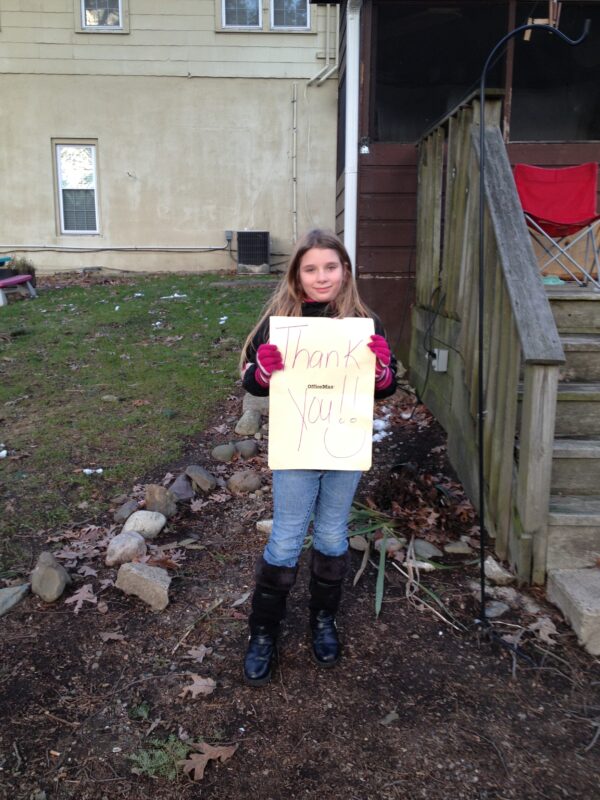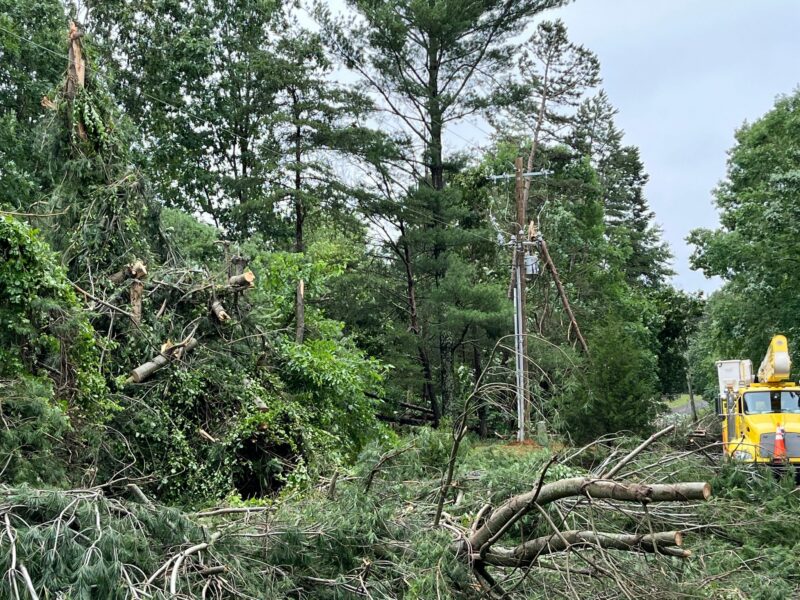Nearly 17 years into his career with Community Electric Cooperative, Lead Lineman Jonathan Powell smiles when asked how many times he’s been deployed to help restore power to the member-owners of other cooperatives experiencing major outages.
“A lot!” he replies, noting that he’s traveled as far as New Hampshire to the north, Alabama to the south and – in his longest deployment – spent 11 days in New Jersey after Hurricane Sandy decimated the Atlantic coastline in 2012.
Thank you! It is a service he is proud to provide, and it is part of a tradition and commitment of mutual assistance that is a hallmark of the electric sector. While the New Jersey deployment marked the first time that electric cooperatives assisted an investor-owned utility, mutual support among electric co-ops has long been commonplace. “Cooperation Among Cooperatives” is actually the sixth of seven core principles and values adopted many years ago by the International Co-operative Alliance. The seventh principle, “Concern for Community,” goes hand in hand with the sixth as a driving force for the mutual assistance that helps restore power to weather-ravaged electric systems faster than it would be otherwise.
Powell was among CEC crews that were on the road twice in June to assist Central Virginia Electric Cooperative and Rappahannock Electric Cooperative after severe storms swept through their territories. The June 22nd event, while far from the worst that Rappahannock has seen to its sprawling system in recent years, nonetheless caused tornado-like damage that brought recovery assistance from five different cooperatives in Virginia and Maryland. Power was restored to nearly all of the 11,000 members who had lost power within 48 hours.
Earlier this year, Powell also was among a team that assisted Southside Electric Cooperative when a major ice storm pummeled its distribution system.
“It’s a very rewarding job. I love what I do, helping our members and still being able to help other places,” Powell said. “Our goal is to stay safe and get people’s lights on so they can continue with their normal routines again.”
On the other end of the cooperatives’ mutual assistance spectrum, Phil Jarvis leads a four-member team that monitors weather and outage maps continuously for the Virginia Maryland & Delaware Association of Electric Cooperatives (VMDAEC). Jarvis is the association’s Manager of Safety Services; operating mainly out of the association’s training center in Palmyra 20 miles southeast of Charlottesville, he coordinates the deployment of line workers, engineers and sometimes even mechanics and warehouse workers when requests for assistance are made.
It can be a tricky task, Jarvis said, since cooperatives nearest to those asking for help often have their own restoration work to perform after significant weather events, and since cooperatives often have small staffs to begin with.
“Everyone understands that cooperatives have to take care of their own systems and members first, so sometimes they may not receive assistance as quickly as they’d like it. But the help always comes,” Jarvis said.
Casey Hollins, Rappahannock’s Managing Director for Communications & Public Relations, said one of the “huge advantages” of the mutual assistance network is the capability it offers to request and receive specialized equipment that can help expedite restoration efforts. Rappahannock is a large cooperative serving more than 170,000 connections in all or part of 22 counties, extending from Winchester in Virginia’s northern tip to Tappahannock and surrounding areas on the state’s Eastern Shore.
Because the terrain varies significantly, the types of vehicles needed to access areas where power lines and poles are down often differ as well, Hollins said.

Community Electric typically sends four line workers from its 11-member construction team to assist other cooperatives. That is a temporary reduction of nearly 50 percent of the line worker staff, since a few of CEC’s construction team members don’t perform line work day to day.
“Community Electric has been wonderful,” said Melissa Gay, Communications & Member Services Manager for Central Virginia Electric Cooperative. CVEC serves 38,000 member-owners in parts of 14 counties. Recalling assistance that her cooperative received last January when winter storm Frida dumped about a foot of snow on the region, Gay said, “Community is one-third of our size, and I hope members realize how incredible it is that other cooperatives, no matter how teeny they are, if they’re not in trouble, they’re going to send their crews to help. That to me is awesome.”
An important new element of the cooperative spirit is the mutual communications assistance that was instituted during that storm, Gay said, which Community also participates in. Because communications staff can quickly become overwhelmed just as line crews are, personnel from unaffected cooperatives are making it a practice to help provide social media content and other communications products to help keep member-owners, political leaders and other key stakeholders abreast of recovery efforts and safety tips.
Powell said the most challenging part of deploying to assist other cooperatives is working in areas and terrains that responders aren’t familiar with. The cooperatives receiving assistance make it a practice to provide personnel – “bird dogs” is the name affectionately used for them – to get crews to their assigned areas and ensure they know the voltage of systems specific to that cooperative.
The physical and logistical demands of power restoration after severe weather events are challenges that too often are underappreciated by the public, Powell feels.
“Many of those who criticize the restoration time frame don’t realize that, in these rural areas, we often have to walk two to three miles in the bush and then climb several poles to get the work done, all while carrying our tools and gear.” he said. “You do that for two or three days straight and sometimes you work 18 or 19 hours a day, then get back to the hotel and get four to five hours of sleep. It gets tiresome after a while.”
Echoing Powell’s sentiments, Hollins said “the expectations for power to be restored immediately have certainly increased over the past couple of years.” Despite such expectations, it is of the utmost importance that crews prioritize safety when they respond to outages, she said.
The coronavirus pandemic added another layer of complexity to the efforts of host cooperatives to ensure the safety and relative comfort of recovery workers, Gay noted. “You don’t do buffet lines anymore; you do individual meals,” she said, adding that different cooperatives can have different requirements for masking, lodging and other safety protocols. 
Notwithstanding those variations, Hollins said there is a special bond that exists among line workers, no matter where they call home. “They share this drive and motivation to do everything they can for our membership. That is very visible to us, and we know from our membership the appreciation and respect they have for them. I can’t emphasize enough how grateful our company is when other cooperatives can come and help.”
Jarvis said that, since joining VMDAEC in 2015 – after an 18-year career as a lineman for BARC Electric Cooperative in western Virginia – he sees that there’s really no “slow season” easing the demands for mutual assistance. Whereas hurricanes or major ice storms can topple hundreds if not thousands of utility poles at a time, even smaller, scattered events occur at a frequency that often strains local resources.
“Members should know that the cooperatives are working together to get members’ power back on as quickly and safely as they can do so,” Jarvis said. “When co-ops are hit, the other co-ops are going to come through to assist.”
